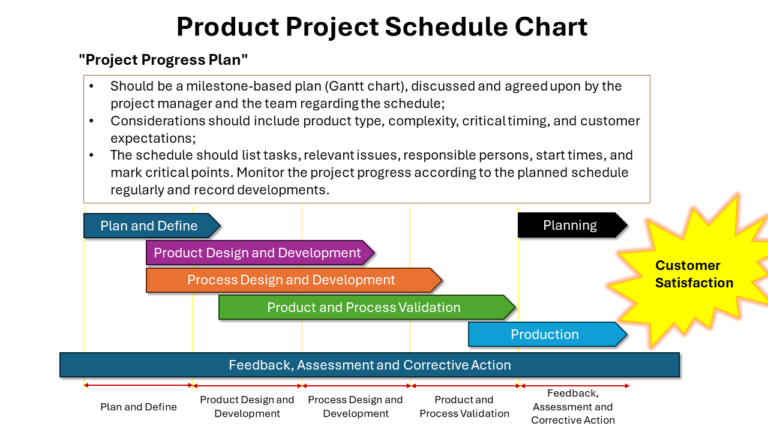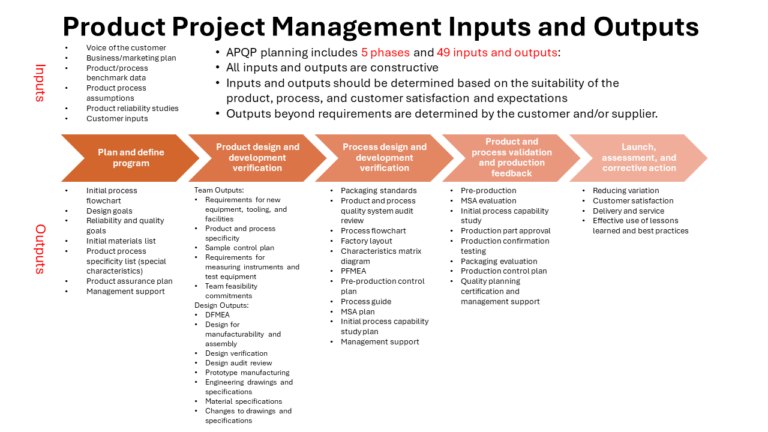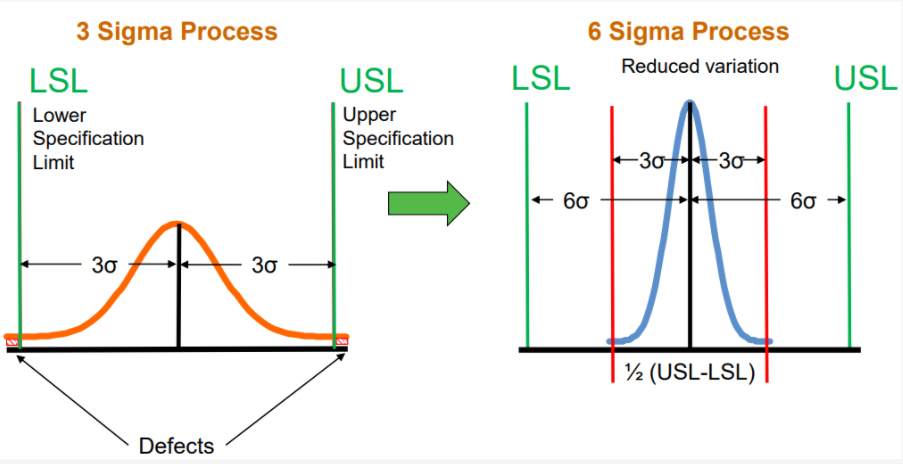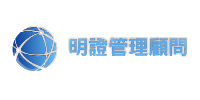Copyright © 2024 Minjeng Management Consulting

IATF 16949:2016 Quality Management System for the Automotive Industry Consulting to Help Businesses Obtain Certification
Essential Certification for Entering the International Automotive Supply Chain
What is IATF 16949?
IATF 16949:2016 is the International standard for Quality Management System for the Automotive Industry Consulting to Help Businesses Obtain Certification, developed with the support of the IATF and the ISO organization.
Its purpose is to develop a standardization automotive quality management system across the automotive supply chain.
Which organizations support and require suppliers to obtain the IATF 16949:2016 certificate?
The IATF members include the following nine major Automotive Assembly Plant (OEMs):
BMW Group, Daimler AG, Ford Motor Company, General Motors, Groupe Renault, Jaguar Land Rover (JLR) Limited,
Stellantis (ex FCA), Stellantis (ex PSA), Volkswagen AG
Additionally, there are five major automotive manufacturer associations:
AIAG (U.S.), ANFIA (Italy), FIEV (France), SMMT (U.K.) and VDA (Germany)
These automotive manufacturers support and require their suppliers to obtain the IATF 16949:2016 certification.
Who needs to obtain IATF 16949:2016 certification?
If your clients include those on the list above, they must obtain the IATF 16949:2016 certification. This standard specifically targets the automotive industry, covering product design/new product development, manufacturing, and installation services. It is generally encouraged for the entire automotive supply chain, including related assembly plants, to hold the IATF 16949:2016 certification.
Even if suppliers are members of the IATF (most Japanese suppliers are members of the Japan Automobile Manufacturers Association, not the IATF), without a valid IATF 16949:2016 certification, it is unlikely they can supply to Tier 1 suppliers or have the opportunity to supply to automobile manufacturers as suppliers.
What are the differences between IATF 16949 and TS 16949?
Originally known as ISO/TS 16949, IATF 16949:2016 was a technical specification of the International Organization for Standardization (ISO). Its aim was to develop a quality system—a system capable of ongoing improvement within the vehicle supply chain and among manufacturers, with a focus on defect prevention, reduction of variance, and waste elimination.
Based on the ISO 9000 standards, the first version, ISO/TS 16949:1999, was released in June 1999. This standard was established by the International Automotive Task Force (IATF) along with ISO’s “Technical Committee” to integrate various national quality management system requirements.
In 2016, the IATF issued IATF 16949:2016, replacing the older ISO/TS 16949:2009. This update allowed IATF 16949 to be certified within the automotive industry supply chain, with the certification based on the IATF’s published certification rules.
Explanation of the IATF 16949:2016
The new standard, IATF 16949:2016, was released by the IATF in October 2016, replacing the existing ISO/TS 16949 which outlined Quality Management System (QMS) requirements for the automotive industry.
The new standard aligns with ISO 9001:2015. IATF 16949:2016 is not an independent quality management standard but is based on ISO 9001:2015, supplemented with additional requirements specific to the automotive industry.
The objectives of the IATF 16949:2016 revision are:
1. Emphasis on defect prevention
2. Reduction of variation and waste
3. Continuous improvement
4. Inclusion of specific automotive industry requirements and tools.
IATF 16949:2016 places significant emphasis on the “process approach”, “customer orientation”, and “zero defects” requirements.
The standard aims for businesses to focus on meeting customer needs and increasing customer value as the starting point of their operations. It highlights the importance of understanding customers’ purchasing power, preferences, and behaviors through analysis, emphasizing the innovation in product development and marketing strategies to dynamically adapt to customer demands.
“Customer orientation” represents a mindset that centers around the customer. Historically, businesses originated from new technologies and products, operating with a “Product-Centric” mindset (a perspective still maintained by many companies). The primary goal was to develop new products and technologies. However, the risk of a product-centric approach is market insensitivity, producing products that do not meet market needs, leading to significant resources being invested in new technologies that consumers do not accept. In contrast, a “Customer-Centric” approach means that all company operations revolve around meeting customer needs, with product development focusing not on pursuing high technology but on genuinely meeting consumer demands.
What is the validity period of the IATF 16949:2016 certificate?
The IATF 16949:2016 certification is valid for three years, and during this period, an audit must be conducted at least once every year.
These audits can be performed by IATF-certified auditors (third-party auditors) or by certification bodies approved by the IATF.
After three years, the certification needs to be renewed.

How much does it cost to implement IATF?
The costs for Consulting and auditing depend on the size and scale of the organization, as they are calculated based on the number of consulting days and auditing days required.
For example, for a small business with about 20 employees, needs may include the provision of document templates and the implementation of coaching training courses.
Estimated Coaching Costs: Approximately NT$250,000 to NT$500,000, subject to adjustment based on an actual face-to-face consultation and site visit.
Actual Verification Costs: These vary by certification body and are not specified at this time.
IATF Training and Consulting Plan (Example)
1. Consulting Plan:
1-1. Preliminary Schedule for Consulting as Follows:
|
# |
Description |
Session/Estimated Time |
|
A |
Project Initiation and Education Training |
|
|
(1) |
IATF 16949:2016 Awareness |
Coordination with the Organization |
|
(2) |
Level 1 and 2 Auditor Training, Including IATF 16949:2016 Clauses and Explanation of the Five Core Tools |
Coordination with the Organization |
|
B |
Understanding the Current Situation, Gap Analysis, IATF 16949:2016 System Structure and PDCA Cycle, Internal and External Issues, Expectations and Requirements of Stakeholders, Setting Quality Policy and Objectives, Customer Orientation and Process Approach, Risk Management Thinking, System Effectiveness, Product Development Process, Application of Core Tools, Customer-Specific Requirements. |
|
|
(1) |
1. Current Situation and Gap Analysis, Internal and External Issues, Expectations and Requirements of Stakeholders, Customer Requirements and Specific Requirements |
Coordination with the Organization |
|
(2) |
1. Completion of the List of Expectations and Requirements of Internal and External Stakeholders |
Coordination with the Organization |
|
(3) |
1. Manufacturing Feasibility Assessment, Special Characteristics Identification, Product Safety Deployment and Maintenance |
Coordination with the Organization |
|
(4) |
1. Comprehensive Development and Deployment of Documentation Requirements and Interactions Corresponding to IATF Clauses |
Coordination with the Organization |
|
C |
IATF Document Revision Completed (Levels 1-4) |
Coordination with the Organization |
|
D |
Internal Audit and Management Review |
Coordination with the Organization |
|
E |
Formal Certification (Document Review + Formal Assessment) |
Coordination with the Organization |
|
F |
Obtain Certification |
|
IATF 16949:2016 Key Focus: Application of the Five Core Tools
Automotive products utilize “Five Core Tools” for project management, which are instrumental in execution and control.
These tools are fundamental to managing the clauses cited in IATF 16949:2016, specifically “8.1 Operational Planning & Control” and “8.3.2.1 Design and development planning” as it pertains to project management (such as APQP or VDA-RGA).
The Five Core Tools of IATF 16949:2016, as per automotive organizations like AIAG and VDA, are promoted through specialized application guides published to encourage their adoption. However, the “AIAG Five Core Tools” are more commonly utilized.
The AIAG Five Core Tools include:
1. Advanced Product Quality Planning (APQP): Prepares organizations for the design creation and production process.
2. Failure Mode and Effects Analysis (FMEA): In 2017, AIAG and VDA integrated their FMEA standards to release the AIAG-VDA FMEA, a common methodology.
3. Measurement Systems Analysis (MSA): Provides standards for checking the precision of measurement equipment.
4. Statistical Process Control (SPC): Offers methodologies and standards for statistical data analysis.
5. Production Part Approval Process (PPAP): Establishes standards for approving parts and services during production.
These tools are integrated into project schedules as shown in the diagram, displaying corresponding inputs and outputs, thoroughly interpreting the clauses on project management methods and tools within the standard.


IATF 16949:2016 focus: How is Six Sigma implemented?
Six Sigma, denoted as “6σ”, is a set of tools and procedures used for process improvement. In the automotive industry, the ultimate goal of “zero defects” has always been paramount for manufacturers and their customers alike. Achieving this goal, including zero defects escaping testing, zero reoccurrences of the same issues, zero customer product failures, and zero claims, requires specific tools and methodologies for support.
The essence of Six Sigma isn’t that there must be no problems or defects within processes, but rather that through various control measures and analytical techniques, early prevention and proactive planning are implemented. This reduces failures and defects from the outset and resolves issues for both the customer and the manufacturer, aiming towards the goal of zero defects.
In practice, companies that implement Six Sigma significantly reduce variability, thereby enhancing value, reducing costs, minimizing waste, and shortening cycle times. This ultimately delivers high-quality products and services to customers, often exceeding their expectations.
Six Sigma is defined through statistical methods that model process data, such as a normal distribution curve, to achieve six standard deviations between the process mean and the nearest specification limit. By controlling and improving to reduce process variability, the characteristics or functions of a product fall within six standard deviations, ensuring 99.99966% of the products are defect-free (equivalent to 3.4 defects per million opportunities). Thus, Six Sigma is used to calculate the percentage of defect-free products in production.
Simply put, Six Sigma ensures that 99.99966% of the products produced are free from defects (3.4 defects per million).

The concept of Six Sigma was developed at Motorola in the 1970s and integrates a variety of tools to strengthen this core philosophy. These tools include Total Productive Maintenance (TPM), the Zero Defects methodology, Quality Control, and methods such as DMAIC (Define, Measure, Analyze, Improve, Control), DMADV (Define, Measure, Analyze, Design, Verify) or DFSS (Design for Six Sigma). These methods are supported by various quality management tools all aimed at achieving this central goal, including Measurement Systems Analysis (MSA), Statistical Process Control (SPC), Why-Why Analysis, Variance Analysis, ANOVA, Fishbone Diagram Analysis, Design of Experiments (DOE), Pareto Analysis, Quality Function Deployment (QFD), Regression Analysis, SIPOC Analysis, and Taguchi Methods.
More recently, due to Toyota’s Lean Manufacturing approach—centered on creating maximum value from minimal work, as epitomized by the 1984 Toyota Production System (TPS)—the goal of which is to reduce waste in the production process, some practitioners have merged Six Sigma methodologies with Lean manufacturing techniques. This fusion has led to the creation of “Lean Six Sigma”, a management approach that combines the rigorous data-driven methods of Six Sigma with the waste-reducing and efficiency-focused practices of Lean. Lean Six Sigma aims to improve quality and efficiency by eliminating waste and reducing variability in manufacturing and business processes.

Six Sigma methodologies have been widely adopted by top global corporations like Honeywell and General Electric (GE), where they are used to cut costs and enhance management quality. These companies showcase simple yet impactful applications of Six Sigma across various sectors.
For example:
- Restaurants may implement Six Sigma by ensuring that the timing of meal service is tightly controlled to deliver hot meals within the customer’s expected timeframe. This precision helps in enhancing customer satisfaction by meeting specific service quality standards.
- In the apparel industry, maintaining consistent sizing in clothing production is crucial. Six Sigma processes can ensure that garments labeled with the same size match the specified dimensions accurately, making it easier for customers to rely on sizing when making purchases.
- In the electronics sector, mobile phone brands might apply Six Sigma to guarantee that every batch of smartphones produced meets the same high standards for camera image quality. This consistency builds customer trust and loyalty as it ensures that all products perform as expected.
These examples illustrate how Six Sigma principles are effectively implemented across diverse industries to improve product quality, reduce variability, and meet customer expectations consistently.
Effective deployment of corporate strategic cultural frameworks, aligned with layered risk management thinking, underscores the use of process methodologies. Emphasizing zero defects and customer orientation, these strategies aid in driving business growth and profitability.
Minjeng Management Consulting

